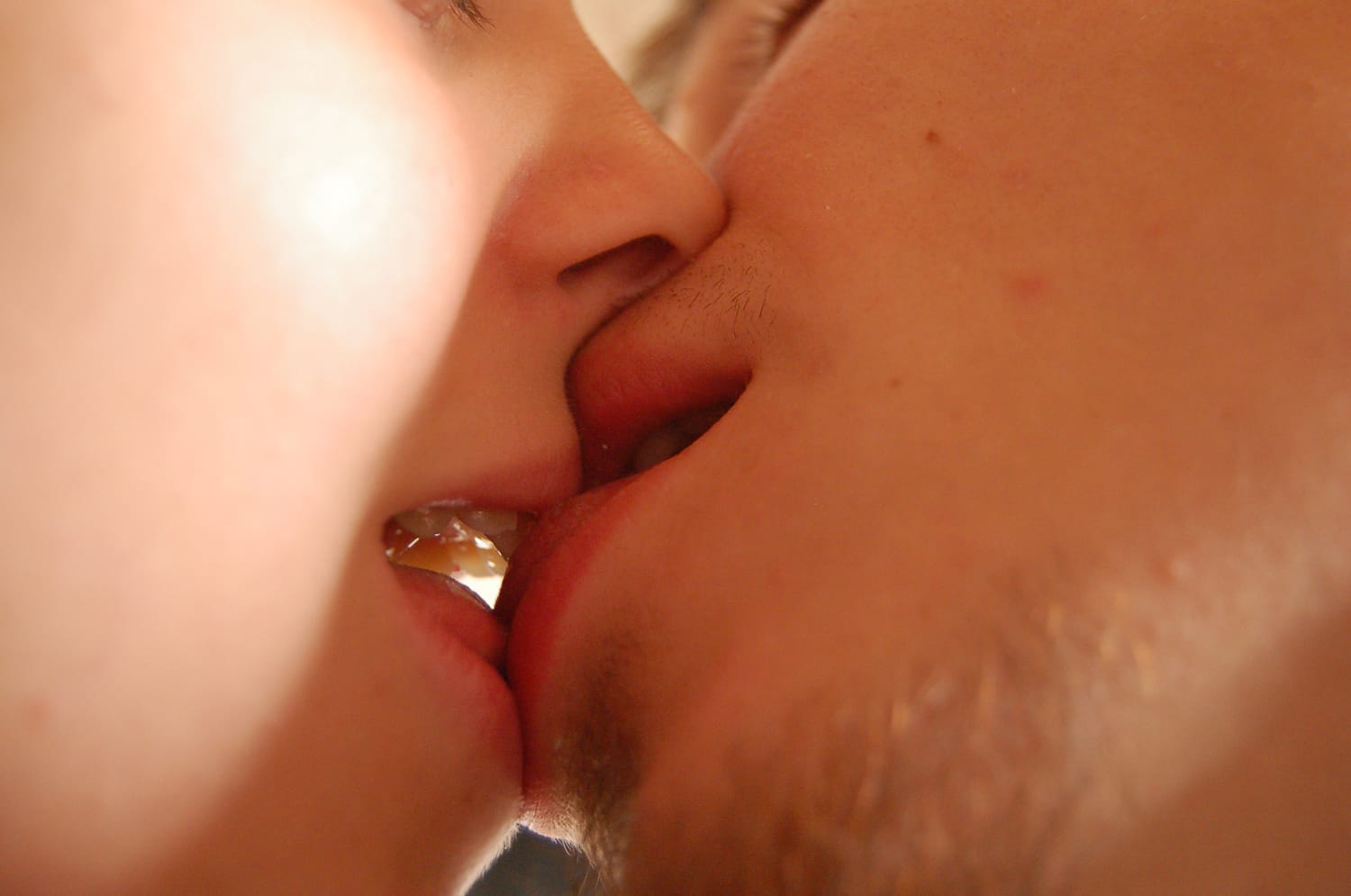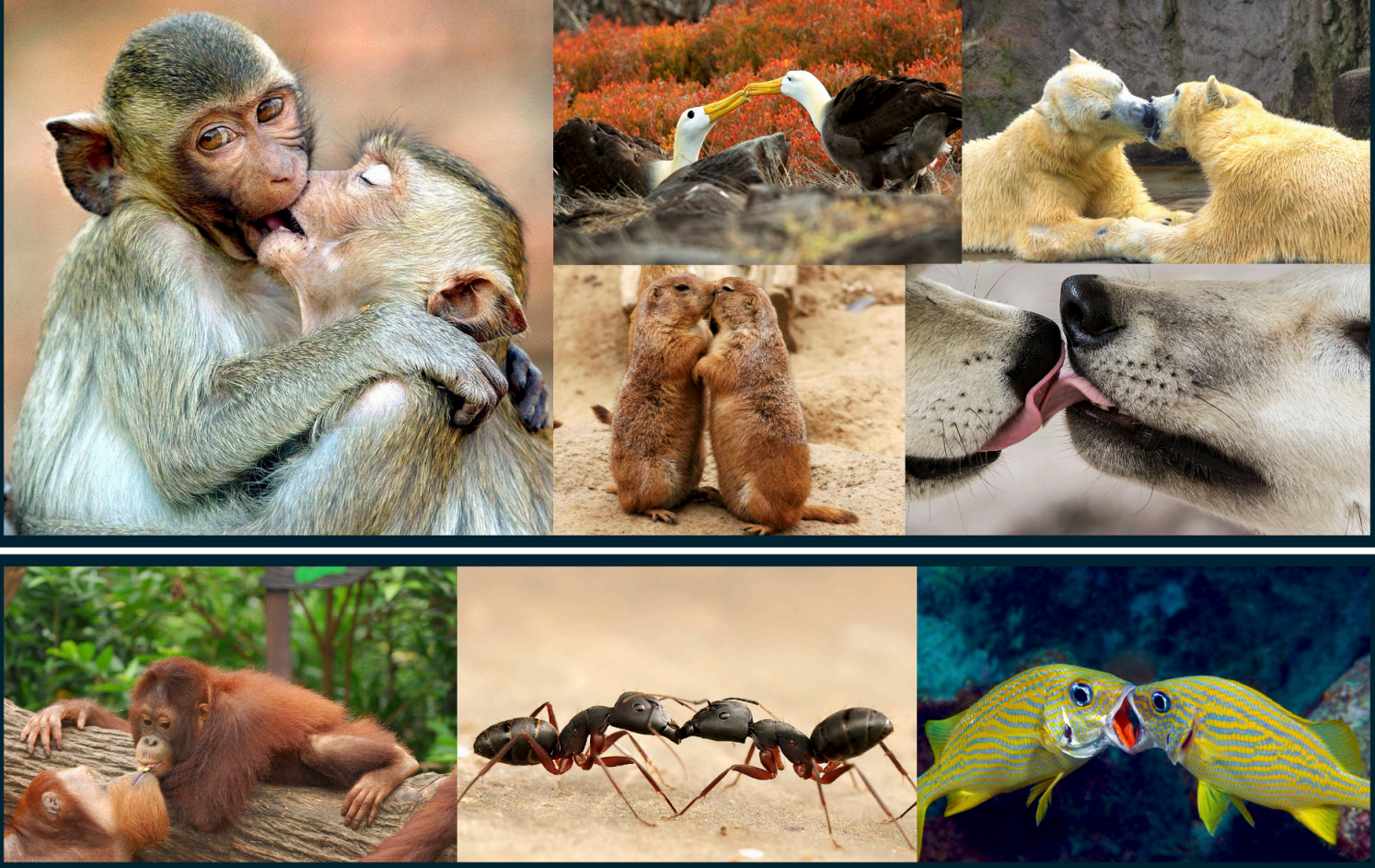
Kissing is one of humanity’s most cherished rituals—just think of the sheer variety of smooches, from the “wedding kiss” to the “kiss of death.” Now, scientists have discovered that the origins of this behavior, which is widespread among many primates, likely dates back at least 21 million years, according to a study published on Tuesday in the journal Evolution and Human Behavior.
In other words, our early primate relatives were sitting in a tree, K-I-S-S-I-N-G, in the early Miocene period. Moreover, the deep evolutionary roots of kissing suggest that Neanderthals likely smooched each other, and probably our human ancestors as well. The new study is the first attempt to reconstruct the evolutionary timeline of kissing by analyzing a wealth of observations about this behavior in modern primates and other animals.
“It is kind of baffling to me that people haven’t looked at this from an evolutionary perspective before,” said Matilda Brindle, an evolutionary biologist at the University of Oxford who led the study, in a call with 404 Media. “There have been some people who have put ideas out there, but no one’s done it in a systematic way.”
“Kissing doesn’t occur in all human cultures, but in those that it does, it’s really important,” she added. “That’s why we thought it was really exciting to study.”

The ritual of the “first kiss” is a common romantic trope, but tracking down the “first kiss” in an evolutionary sense is no easy feat. For starters, the adaptive benefits of kissing have long eluded researchers. Mouth-to-mouth contact raises the odds of oral disease transfer, and it’s not at all clear what advantages puckering up confers to make it worth the trouble.
“Kissing is kind of risky,” Brindle said. “You’re getting very close to another animal’s face. There could be diseases. To me, that suggests that it is important. There must be some benefits to this behavior.”
Some common explanations for sex-related kissing include mate evaluation—bad breath or other red flags during a smoochfest might affect the decision to move on to copulation. Kissing may also stimulate sexual receptiveness and perhaps boost the odds of fertilization. In platonic contexts, kissing could serve a social purpose, similar to grooming, of solidifying bonds between parents and offspring, or even to smooth over conflicts between group members.
“We know that chimpanzees, when they’ve had a bit of a bust up, will often go and kiss each other and make up,” Brindle said. “That might be really useful for navigating social relationships. Primates are obviously an incredibly social group of animals, and so this could be just a social lubricant for them.”
Though most of us have probably never considered the question, Brindle and her colleagues first had to ask: what is a kiss? They made a point to exclude forms of oral contact that don’t fall into the traditional idea of kissing as a prosocial behavior. For example, lots of animals share food directly through mouth-to-mouth contact, such as regurgitation from a parent to offspring. In addition, some animals display antagonistic behavior through mouth-to-mouth contact, such as “kiss-fighting” behavior seen in some fish.
The team ultimately defined kissing as “a non-agonistic interaction involving directed, intraspecific, oral-oral contact with some movement of the lips/mouthparts and no food transfer.” Many animals engage in kissing under these terms—from insects, to birds, to mammals—but the researchers were most interested in primates.
To that end, they gathered observations of kissing across primate species and fed the data into models that analyzed the timeline of the behavior through the evolutionary relationships between species. The basic idea is that if humans, bonobos, and chimpanzees all kiss (which they do) then the common ancestor of these species likely kissed as well.
The results revealed that the evolutionary “first kiss” likely occurred among primates at least 21 million years ago. Since Neanderthals and our own species, Homo sapiens, are known to have interbred—plus they also shared oral microbes—the team speculates that Neanderthals and our own human ancestors might have kissed as well.
While the study provides a foundation for the origins of kissing, Brindle said there is not yet enough empirical data to test out different hypotheses about its benefits—or to explain why it is important in some species and cultures, but not others. To that end, she hopes other scientists will be inspired to report more observations about kissing in wild and captive animal populations.
“I was actually surprised that there were so few data out there,” Brindle said. “I thought that this would be way better documented when I started this study. What I would really love is, for people who see this behavior, to note it down, report it, so that we can actually start collecting more contextual information: Is this a romantic or a platonic kiss? Who were the actors in it? Was it an adult male and an adult female, or a mother and offspring? Were they eating at the time? Was there copulation before or after the kiss?”
“These sorts of questions will enable us to pick apart these potential adaptive hypotheses,” she concluded.
